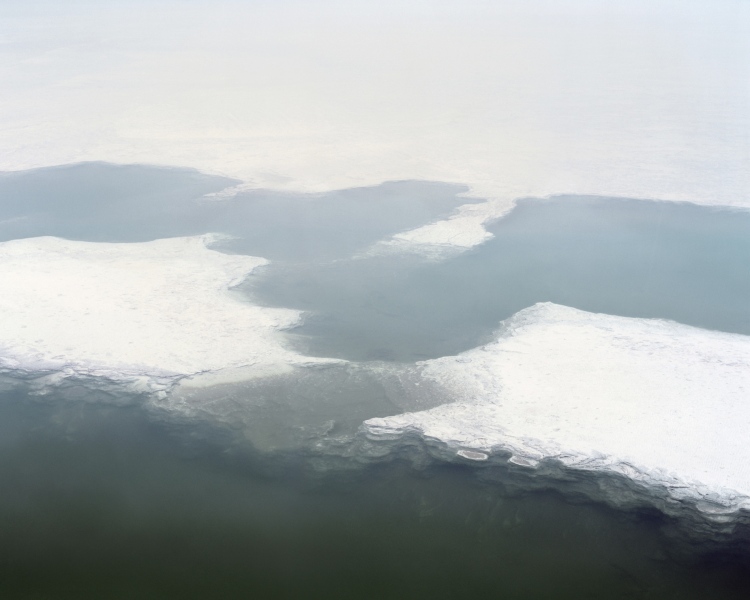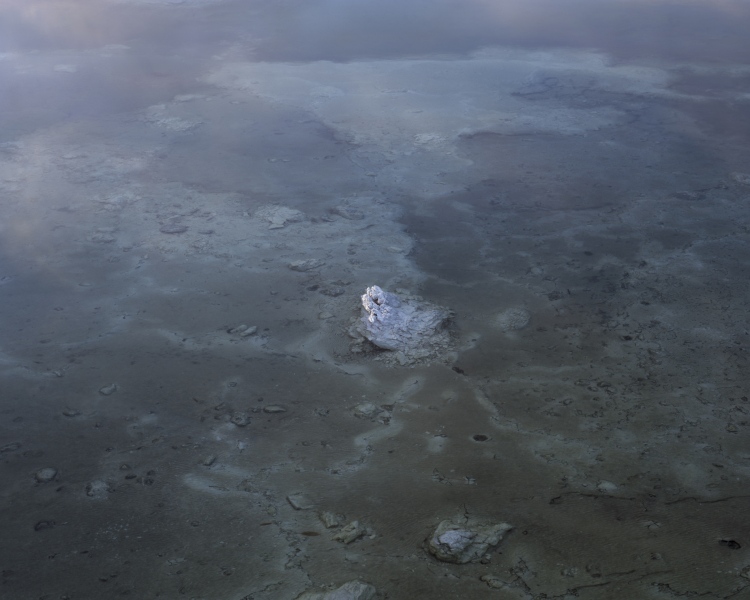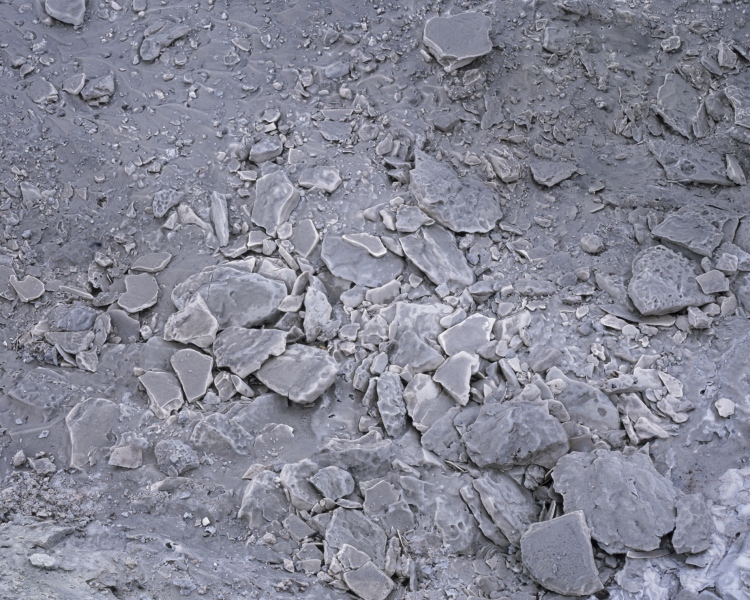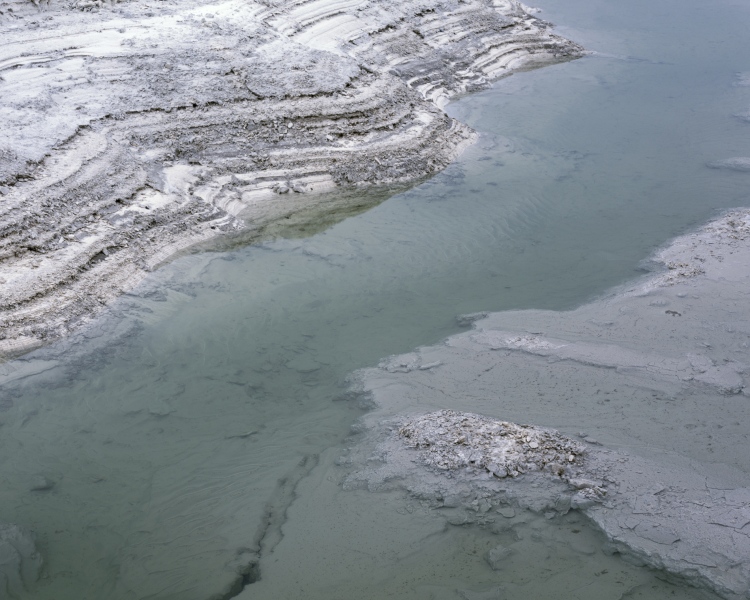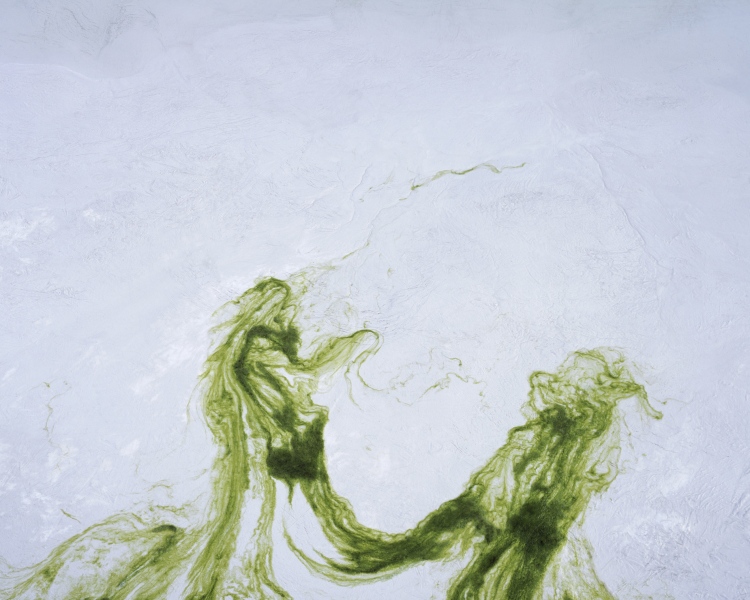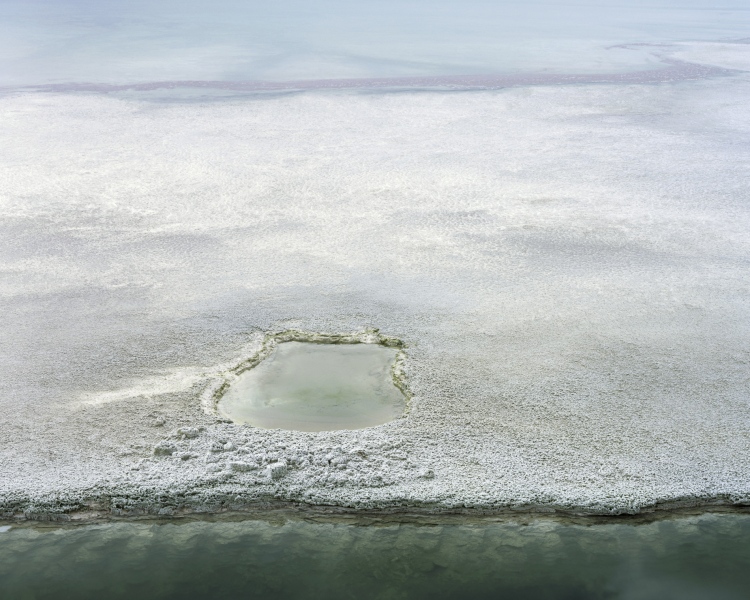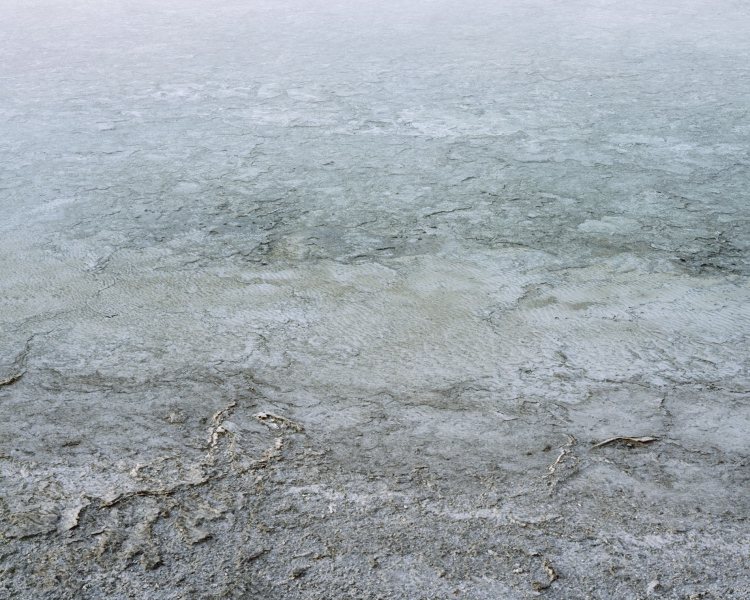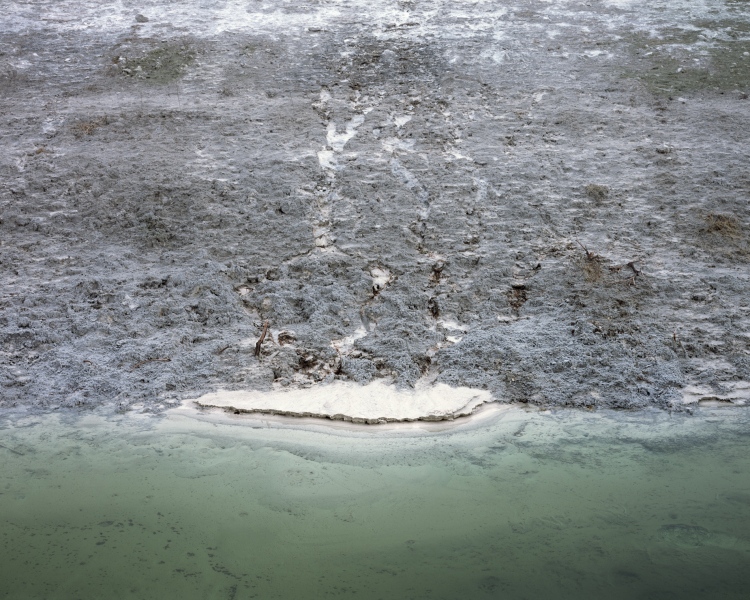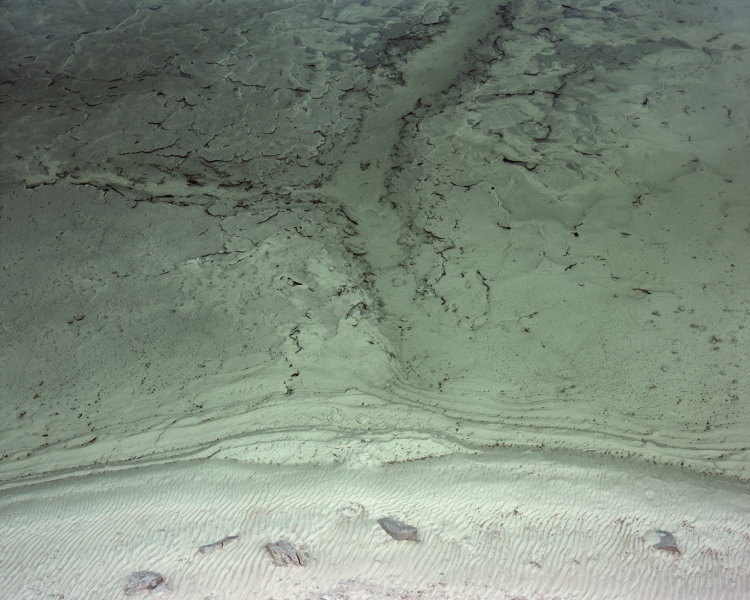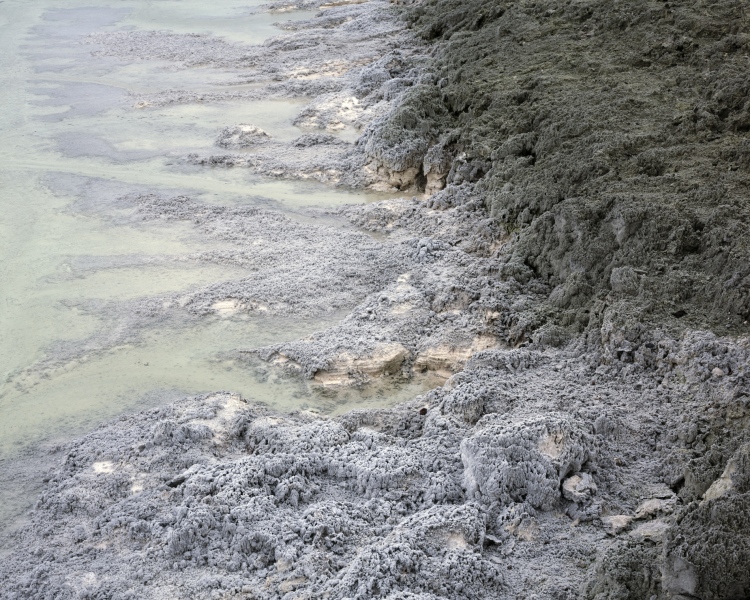The landscape is created of plaster mud, which arises as by-product of fertilizer production in the largest industrial plant in Croatia. For production purposes phosphorus was extracted from imported African sand, leaving plaster mud as residue. Over a period of 30 years, more than 6 million tons of mud was stored on this site, in the middle of a natural reserve. Fertilizers are used to stimulate natural growth, but on the other hand their production results with a lifeless, transformed landscape.
These photographs represent a segment of photographic work, which uses examples of various landscape types (abstract, natural, urban) in the industrial town of Kutina to examine how social relations are conditioned by industrial production. Today‘s ecological perspective calls fertilizer use into question, but in the second part of the 20th century fertilizers had a strong impact in reducing starvation all around the globe. Today we are more aware of both the finality of natural resources on the planet and the high price that the ecosystem is paying for our economic development and living standard.
